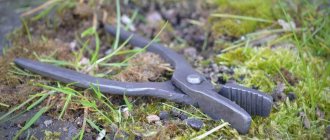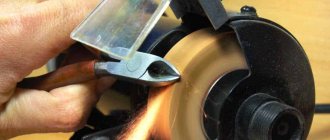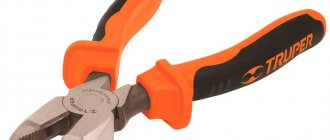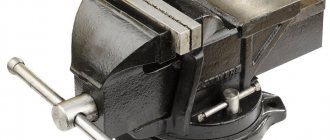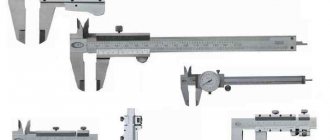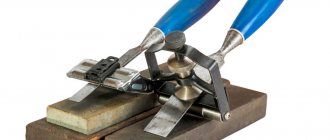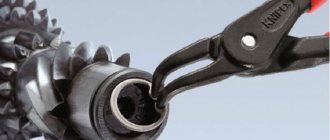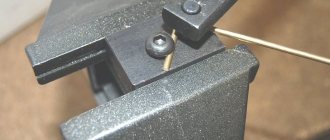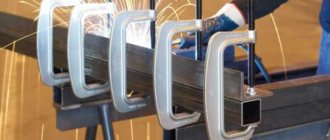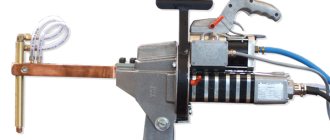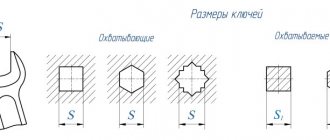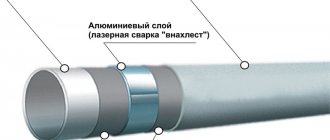Historical perspective
Initially, as a tool, pliers were intended to remove hot metal blanks and crucibles of molten metal from forges. They were also used by blacksmiths to hold various workpieces during forging.
Archaeologists prove that the prototype of pliers - tongs, which had a rod-axis - was invented back in the Neolithic era. Back then this instrument was made from burnt wood.
The first depiction of hand pliers tools dates back to the 6th-5th centuries BC. In the Bronze Age, blacksmiths used primitive pliers as clamps. They are currently found in the burials of blacksmiths as burial goods, indicating that the deceased had a special and fairly high social status.
Since ancient times, pliers have been two castor beans connected by a rivet that acts as an axis. This tool has been evidence of specialized blacksmithing skills since ancient times. Together with the anvil and hammer, pliers were an attribute of numerous ancient Greek and Roman blacksmith gods and lords of thunder (Thor, Vulcan, Hephaestus, etc.).
Much later, pliers began to be used in construction work, in plumbing activities, widely used in electrical work, etc. Depending on the specialization and principle of the device, various pliers are called side cutters, pliers, wire cutters, pliers, etc.
Construction, general purpose
Pliers are a versatile tool. He is an indispensable assistant both at home and at work. Their design is two parts connected. Each consists of two sections - a worker and a handle. Depending on the purpose for which the tool is intended, the ratio between the jaws (working part) and the handle may vary.
Thus, standard carpenter's pliers have small rounded jaws that provide a secure grip. They are very convenient for pulling out nails or removing fasteners that have become unusable.
Pliers are also a narrow-profile or combined tool. Some models can be equipped with a nail puller, screwdriver, and other devices that are located on the back of the holders.
DIY crimping pliers
If you want to save as much as possible, make the tool yourself. Crimping pliers for twisted pair and crimping sleeves on a wire can be made using old pliers. For this:
- Weld a regular nut by placing it between the teeth of the tool.
- Clean the welds.
- Cut the nut in half.
- Weld two parallel strips to one of the handles.
- On the other side, weld an extended nut between them.
- Screw a long bolt into it.
- Then weld a metal rod knob to the bolt head.
To make it convenient to work, it is recommended to clamp future crimpers in a vice. If the pliers are old and very rusty, it is important to develop them before use. These homemade crimping pliers are primitive, but reliable. Not nearly as versatile as factory models, but guaranteed to last for many years.
Pliers: types of tools
Taking into account the fact that pliers are a diverse and variable tool, they are divided into different types that are used in specific areas of activity.
The main difference between pliers (their varieties from the group of pliers) is in the form of the working surface. It determines their main purpose - blacksmithing, railways, electromechanical and electrical work, medicine and dentistry, etc.
Design features of adjustable pliers
Since adjustable pliers are the most versatile tool, it is worth getting to know their design features in more detail. Based on the type of mechanism used, adjustable pliers are divided into two categories of tools.
The adjustable mechanism can consist of an axis fixed to the movable jaw of the tool and a groove on a stationary clamping element, which is a series of aligned circles. On the axis, so that it can be moved along the groove and thereby adjust the degree of opening of the jaws, a sector is specially cut out. This adjustable mechanism works as follows: the axis for moving along the groove is rotated so that its bevel is parallel to the side of the cutout. Having positioned the axis in this way, the adjustable pliers are set to the required amount of jaw opening.
Pliers with grooves on the fixed part
More common are adjustable pliers, the jaw opening mechanism of which is made according to the so-called American system. On the fixed jaw of such pliers there is a number of circular grooves along which the “tide”, made on the movable handle of the tool, moves.
Circular groove pliers
To adjust the degree of opening of the pliers, you must perform the following steps:
- Remove the “tide” from its engagement with the side walls of the grooves.
- Place the mite lips as far apart as possible from each other.
- Place the tool handles in the required position and bring them together again.
Adjustable pliers equipped with a mechanism of the second type are considered more reliable and easier to use.
Many experts, when comparing adjustable plumbing pliers with conventional adjustable wrenches, emphasize that the former are easier to use and the required degree of opening of their working jaws is carried out more quickly. As a rule, adjustable pliers, equipped with adjustable mechanisms of both the first and second types, have about seven fixed positions of the clamping jaws.
Standard pliers
This is a tool that has long handles and short jaws. The latter are adjacent to each other in a small area and have flat or pointed edges. Their main purpose is to capture parts.
Forging pliers are a tool designed to hold hot metal. A mandatory attribute is long handles with various jaw shapes.
Railway workers use special pliers that are designed for dragging rails and sleepers. These are massive products designed to be used by two or more people.
Requirements
- First, of course, they must be easy to use and light enough.
- Secondly, when gripping, the handles should not completely close together, but be at some distance and lightly spring-loaded.
Different types of blacksmith pliers. Photo Firm Utica
Very often it is necessary to adjust the jaws of the pliers to the workpiece. This is done very simply. There are two ways to give the sponges the desired shape. After heating the pliers to a red-hot state, carefully squeeze the workpiece with their jaws and forge them directly over the workpiece to a position in which the jaws fit tightly to the metal surface.
The second method of shaping the jaws under the workpiece differs from the first in that the jaws of the pliers are heated together with the workpiece sandwiched between the jaws. After this, the jaws, as in the previous method, are crimped using a handbrake, having first secured the handles of the pliers using a spandher.
Pliers
Pliers are a type of pliers that have a flat working surface. Often it is equipped with small notches. They are designed to grip and hold relatively small parts. For ease of working with parts, two such tools are sometimes used at once. They can have various shapes of working surfaces, which is why they got their name: long-nose pliers, duck-billed pliers, narrow-nose pliers. Often, pliers are equipped with cutting edges designed for cutting wire.
Combination pliers are also called pliers. Such tools include pliers equipped with a cutting edge for cutting nails and wire, and serrated grooves designed to hold tubes, nuts and other cylindrical parts.
Wire cutters
Nippers are pliers with a cutting working surface adapted for cutting through reinforcement, nails, wire, etc. The cutting edges of nippers are of different shapes. In this regard, they are divided into five main types: side (diagonal, side cutters), end (transverse), cable, stripping (pliers for removing insulation), end.
The most commonly used are side cutters or side cutters. They are also designed for cutting through metal structures, which include bolts, fittings, ropes, cables, and nails. They are distinguished by a particularly durable design and increased hardness of the working edges. Often the design uses a number of hinge joints to increase the compression force.
How to crimp wires without crimping pliers?
Nowadays there are universal tools on sale. Crimping pliers for Internet cables, wires of different diameters and stripping contacts can be one functional device with additional functions. There are effective ways that make it possible to do without a specialized tool. Although their use does not guarantee that the contact will be reliable and durable. The first way is this:
- Place a piece of tin inside the tip.
- Heat it with a torch (although you can get by with a hair dryer).
- Insert the tinned cable there.
The second method requires a hammer, any type of bit, a sledgehammer or vice, and a center punch (or a 200mm nail):
- Insert the tip into the wire.
- Place it on a hard surface - a vice or sledgehammer.
- Make pinpoint indentations on the tip using measured blows of the hammer on the center punch.
